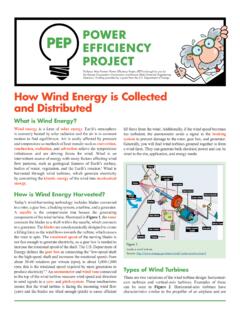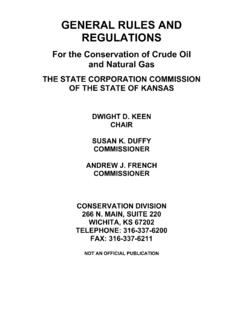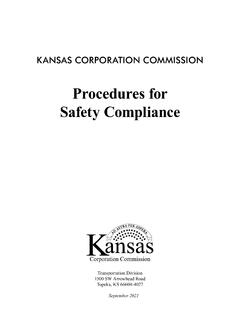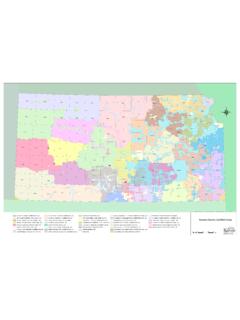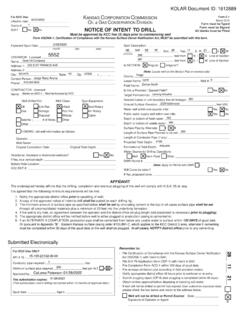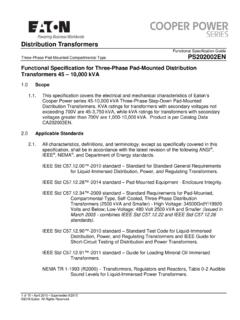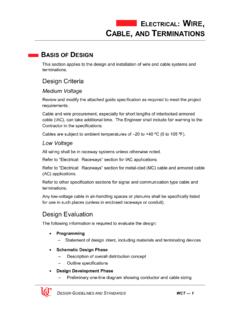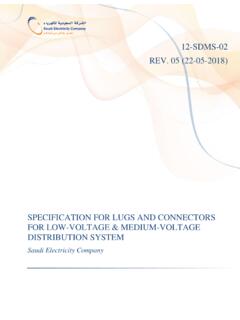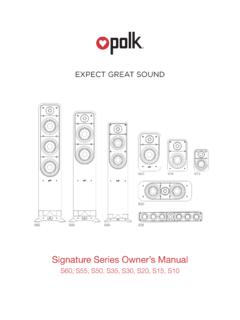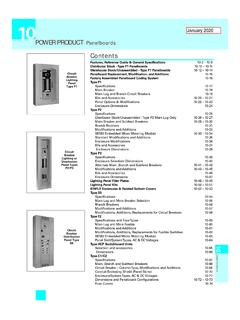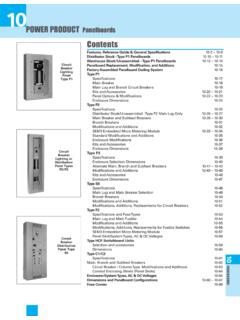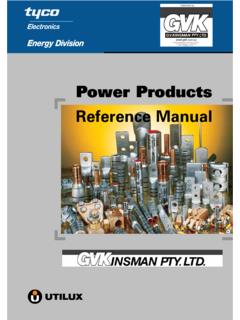Transcription of Best Practices for Tracer Wire System Installation - Kansas
1 Best Practices for Tracer Wire System Installation Basic locating Practices overview, best Installation procedures for Tracer wire systems, products and testing Why? #1 Prevent Injuries Why? #2 Prevent Property Damage Why? #3 Save Time and Money Why? #4 A Key Element of a Damage Prevention Program Why? #5 Federal Code Requires a Tracer Wire with PE Pipe Scope of Project Collecting Data Over 2 years of documenting field research locates, talking to operators, communicating with locators of other utilities, and researching how theories of locating apply to Tracer wire Year long effort collecting specifications and procedures for Tracer wire Installation from gas utilities across North America Large number of LDC s have an out-of-date.
2 Incomplete or a limited Installation specification in their O & M manuals Some LDC s were having locating issues Scope of Project Action Plan Enlisted the services of Utility, Safety & Design, Inc. (USDI) as a partner to confirm compliance with all existing standards and regulations Establish complete Tracer wire System standards predicated on locating accuracy and efficiency Result? Tracer Wire System and Installation Standards. Work Included Complete Tracer wire System products and System parameters considering Installation by trenching, plowing, or horizontal directional drilling for PE gas systems and pipelines References APWA Uniform Color Code Title 49 Transportation 192 PHMSA Pipeline Safety Compliance with state and local regulations ANSI GPTC Code Our process continues to We continue to teach, and learn more about the complete Tracer wire System through ongoing field work, technical training sessions.
3 Frequent meetings with utility operators, consulting engineers, and utility contractors. The current design standards assume a life-cycle of 50+ years for pipe being installed today. Installation of a complete Tracer wire System must not only provides for accurate and efficient locates, but meets the same life-cycle of the utility piping that it s being installed with. Utility Locating Basics Very high-level overview to gain a basic understanding of locating. A basic understand of utility locating will help us understand the value of complete Tracer wire systems Any locating equipment can be used.
4 A typical line tracing kit consists Transmitter Connective Leads Ground Stake Receiver Signal Clamp The locating Produced by the flow of the alternating current (AC) which creates an electromagnetic field. Electromagnetic field radiates from the line and is known as the signal The locating If there isn t any AC CURRENT FLOWING, there will not be a LOCATING SIGNAL Active signal 33 kHz 8 kHz 512 Hz High frequency ( kHz) Direct connection, clamp & induction Shortest distance Highest distortion Medium frequency ( kHz) Direct connection, clamp & induction Reasonable distance Increased distortion Low frequency (512 Hz)
5 Direct connection Longest distance Lowest distortion Complete Tracer wire System products When designing a utility, how seriously is the design or specification of the Tracer wire taken? Unfortunately, not nearly as much as the rest of the System . Tracer wire systems have been taken far too lightly with very broad specifications. What should be specified? Write specifications to cover the entire Tracer wire System , including: Wire (type of conductor and size to match Installation method Insulation type and color connectors Tracer wire access points Grounding Procedures for Installation & testing Wire Wire Size or Gauge (AWG) Myth: The bigger the wire the stronger the signal.)
6 Fact: Larger diameter wire is specified for strength, not signal carrying qualities. Breakage is the most common reason for signal failure typically occurring during Installation . The size and strength of the wire should coincide with the Installation method. Best Practices - Products Tracer Wire Open Trench 14 AWG American Made CCS with a minimum break load of 194 lbs. or a Solid CU with a break load of 112 lbs. 12 AWG American Made CCS with a minimum break load of 302 lbs. or a Solid CU with a break load of 180 lbs.
7 Minimum 30 mil. HDPE insulation thickness Best Practices - Products Tracer Wire Horizontal Directional Drilling & Plowing Installation 12 AWG American Made CCS Tracer Wire with a minimum break load of 1,150 lbs. Multiple 8 AWG Solid Copper Tracer Wire with a minimum break load of 485 lbs. Minimum 45 mil. HDPE Insulation Complete Tracer wire System products Wire connectors Lockable connectors specifically designed for direct burial, dielectric silicone gel filled, designed to prevent uninsulated wire exposure.
8 Other connector options might include non-lockable direct bury lugs equipped with silicone gel specifically designed for direct burial. Complete Tracer wire System products Grounding Tracer wire must be properly grounded at all dead ends / stubs. Grounding shall be achieved by use of lb., drive-in magnesium grounding anode rod with a minimum of 20 feet of lead wire. Complete Tracer wire System products Grounding If grounding the Tracer wire at the meter, 2 Terminal access boxes are required to allow for locates to be done from the meter or toward the meter.
9 When the anode wire will be connected to a Tracer wire access box, a minimum of 2 feet of slack wire is required after meeting final elevation. Complete Tracer wire System products Termination / Access Boxes All locate access terminals will be designed for Tracer wire and easily accessible. Grade level access box Above ground access box Meter riser protective direct connect access point Installation methods Do s and Don ts No bare Tracer wire shall be exposed either below or above ground. Exposed ends such as at meter risers are not allowed and shall be protected from exposure.
10 Tracer wire shall not be taped to the pipe. Tracer wire shall not be wrapped around the pipe. Tracer wire shall not be connected to existing foreign / conductive utilities. Non-locking friction fit, wire nut, spray-on waterproofing or taped connectors shall not be used. Installation methods Do s and Don ts Access through valve box is not allowed. System shall not be looped. Looping of Tracer wire will result in difficulty locating as the signal is nullified. Continuous wire installations that have multiple wire laid side-by-side or in close proximity to one another shall not be allowed.
